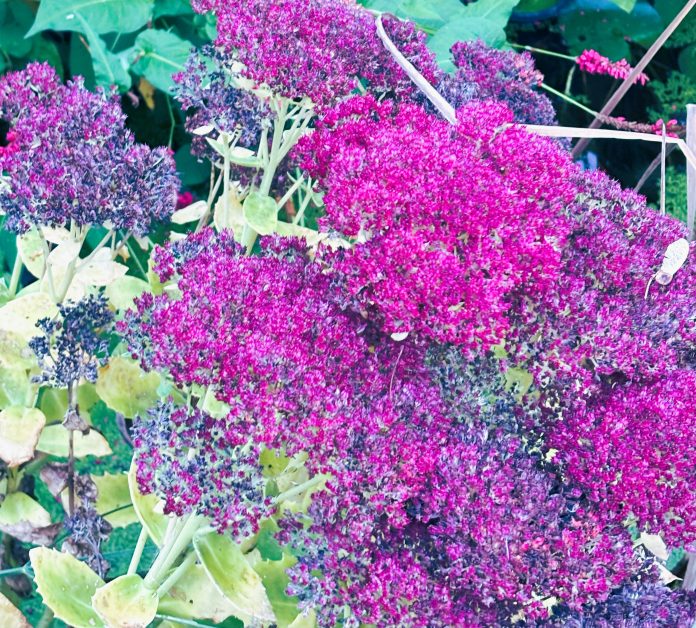Scientific Update: A New Name for an Old Favorite
Sedum spectabile, a beloved perennial for gardeners, now falls under the genus Hylotelephium. Its updated botanical name is Hylotelephium spectabile. This change reflects advancements in plant taxonomy, distinguishing the broader Sedum genus from closely related species with similar growth habits. Common names include Ice plant, Brilliant stonecrop, Butterfly stonecrop.
Flowering Time: A Late-Season Delight
Hylotelephium spectabile blooms from late summer into autumn, typically August through October in temperate regions. Its flat-topped clusters of pink, mauve, or white star-shaped flowers provide essential late-season nectar for bees, butterflies, and other pollinators. The flowers stand atop fleshy, upright stems adorned with succulent, green-gray leaves, making it a striking addition to borders or rock gardens.
Caring for Hylotelephium spectabile
This plant is renowned for its low-maintenance nature, thriving in sunny spots with well-drained soil. Here’s how to keep it happy:
- Planting Site:
Choose a location with full sun to ensure the plant develops sturdy stems and vibrant blooms. Partial shade is tolerated, but it may result in leggier growth. - Soil:
Hylotelephium spectabile prefers moderately fertile, sandy, or gravelly soil. Avoid waterlogged areas, as its roots are prone to rot. - Watering:
Once established, it is drought-tolerant, requiring minimal watering. Water deeply but infrequently during prolonged dry spells. - Fertilizing:
A light application of a balanced fertilizer in spring promotes healthy growth, but overfeeding may lead to floppy stems. - Pest and Disease Management:
Generally pest-free, but keep an eye out for slugs, snails, or aphids in wet conditions.
When and How to Cut Down Hylotelephium spectabile
To maintain its tidy appearance and encourage robust growth, follow these pruning guidelines:
- Autumn:
Leave the seed heads standing after flowering. They provide winter interest and food for birds. - Spring:
Cut back old stems to ground level as new shoots emerge. This timing helps the plant focus its energy on fresh growth rather than maintaining dead material.
Additional Tips:
- Division every 3-4 years in spring helps rejuvenate the plant and prevent overcrowding.
- Use the divisions to propagate and expand your garden or share with friends.
Hylotelephium spectabile is a superb choice for low-maintenance gardens, pollinator-friendly spaces, and those seeking year-round interest. Whether you’re refreshing a sunny border or creating a drought-tolerant garden, this plant will reward you with beauty and resilience.




